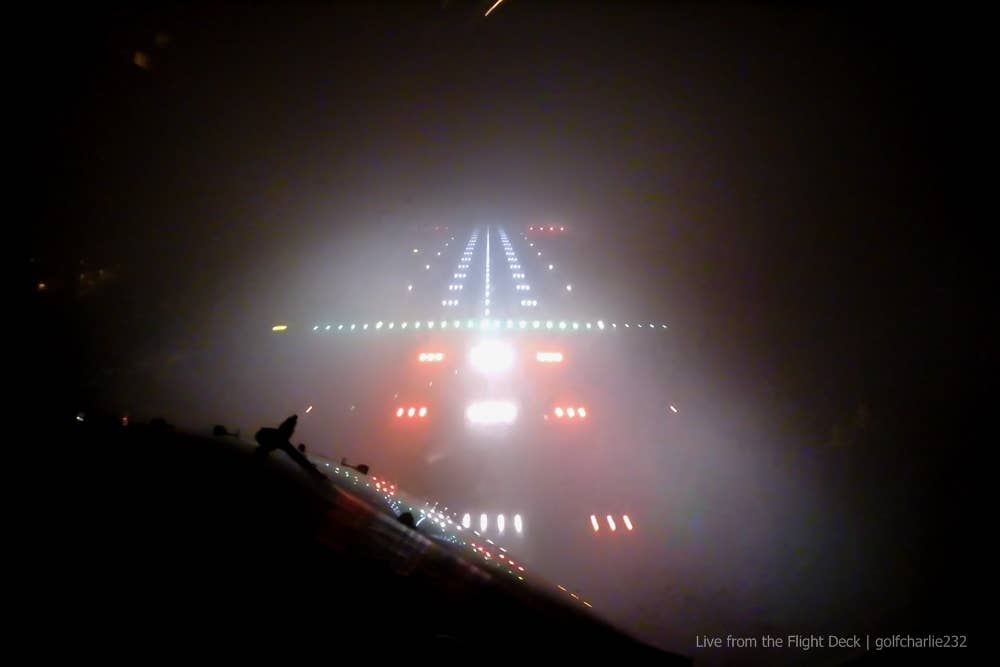Austin Revisited: The Quest For Heroes
All that can really be said for sure is that the airplanes didn’t collide on a foggy runway. Does that mean that the system worked? Hardly.

Accident investigation, by its very nature, requires second guessing. In fact, it’s defined by second guessing based on disclosed factual information. Sometimes the findings are as black and white as these things can get—say a fuel exhaustion accident, a stall spin incident or landing gear up. The nut behind the wheel catches the blame because no other culprits are in evidence.
The recent loss of separation incident at Austin—loss of separation being the more clinical term than near disaster—will probably be a lot murkier. In that context, an airline pilot friend of mine is grinding me about giving the FedEx pilots too much credit for saving the day.
To spare you the slog through the video, the executive summary is that in RVR weather where the tower controller couldn’t see the runway, he cleared a Southwest 737 for takeoff with the FedEx 767 on a 3-mile final. The gap was apparently too tight and although the Southwest flight acknowledged the inbound traffic, the tape appears to show Southwest took 63 seconds to get on the runway and rolling.
The tape also suggests that the FedEx pilots figured out the sequence was too close and executed a go-around. In the process, they ordered the Southwest jet to abort its takeoff roll, evidently worried that it could climb into them as they flew the missed. (The geometry suggests that wouldn’t have happened.) My friend believes FedEx will get dinged for both what may have been a late go-around and for issuing an utterly non-standard command to another airplane. He’s probably right on both counts, although the go-around point remains to be documented, as does how the go-around was flown with regard to climb rate.
This is the classic no good deed goes unpunished. His argument is that if FedEx may have saved the day by exercising good judgment on the go-around, they should have done better by exercising it earlier, in which case there would have been no loss of separation and no evening news stories. Judgment. And rendered after the fact, it’s always easier than doing it on the fly with seconds to decide.
To me, this illuminates a level of expectation that most of us don’t think about. And it’s this: If someone else screws up, as pilot in command, are you on the hook to see it and figure out how to fix it? In a way, that’s what the Austin incident is about.
Here's a simple example. In visual conditions, you’re on short final and an airplane crosses the runway just as you approach the flare. In your judgment—judgment repeated for emphasis—there’s not enough margin so you go around. Whether the controller cleared the airplane to cross is immaterial. You judged it too tight. Are you right? Of course you are. I can’t think of many—really any—circumstances where a go-around is wrong, even though another pilot in the same circumstance might continue because he or she judges it acceptable. And yes, this includes the insanely busy pattern at Oshkosh. And yes, controllers have been surprised by unexpected go-arounds but they’re not supposed to build sequences that don’t allow for same.
Now freight the same situation with low IMC barely at minimums. You’re on final and you hear the controller clear a departure in front of you. There’s an expectation that the controller has allowed enough time for the runway separation ATC is required to provide. But, absent the ability to see through the clag, are you expected to somehow sense the separation won’t be adequate and act immediately by going around? Is that part of your PIC requirements? Would that be a reasonable judgment you are expected to make? I’d say no, although survival instinct has to figure into it to, human error being ever present. Separation is based on trust and it’s reasonable to depend on it. Most of us know enough about ATC to realize the scenario I painted above would never happen, but at Austin, it apparently did.
What the NTSB and FAA will have to determine was whether it was reasonable to expect the FedEx pilots to surmise that the controller appeared to have messed up the sequencing with a too-tight gap and that they were in the best position to resolve the conflict. My friend thinks this is true, but I’m not so sure. There were multiple responsibilities. The controller still retained authority to order a go-around to fix the egregious error it appears that he made. Southwest had the option of declining the takeoff had they paused to calculate the 767 would cover 2.4 miles in a minute. Neither of those strike me as unreasonable.
Regardless of where they began the go-around and based on the tape, FedEx still seems to be the only one of three actors with anything like situational awareness. There could be more going on the background. We'll see. One interesting twist here is that FedEx aircraft are equipped with FLIR, which may or may not have been a factor. A FedEx pilot I know says it’s unlikely that it would have provided a clear picture in the conditions at Austin.
The whole thing puts me in mind of that classic 1995 submarine thriller, Crimson Tide. Remember Jason Robards' line at the review board after Denzel Washington and Gene Hackman got into a bloody brawl over destroying the earth? “You both created one hell of a mess.” Just make it three instead of two and you’ve got the immediate takeaway from this incident.






